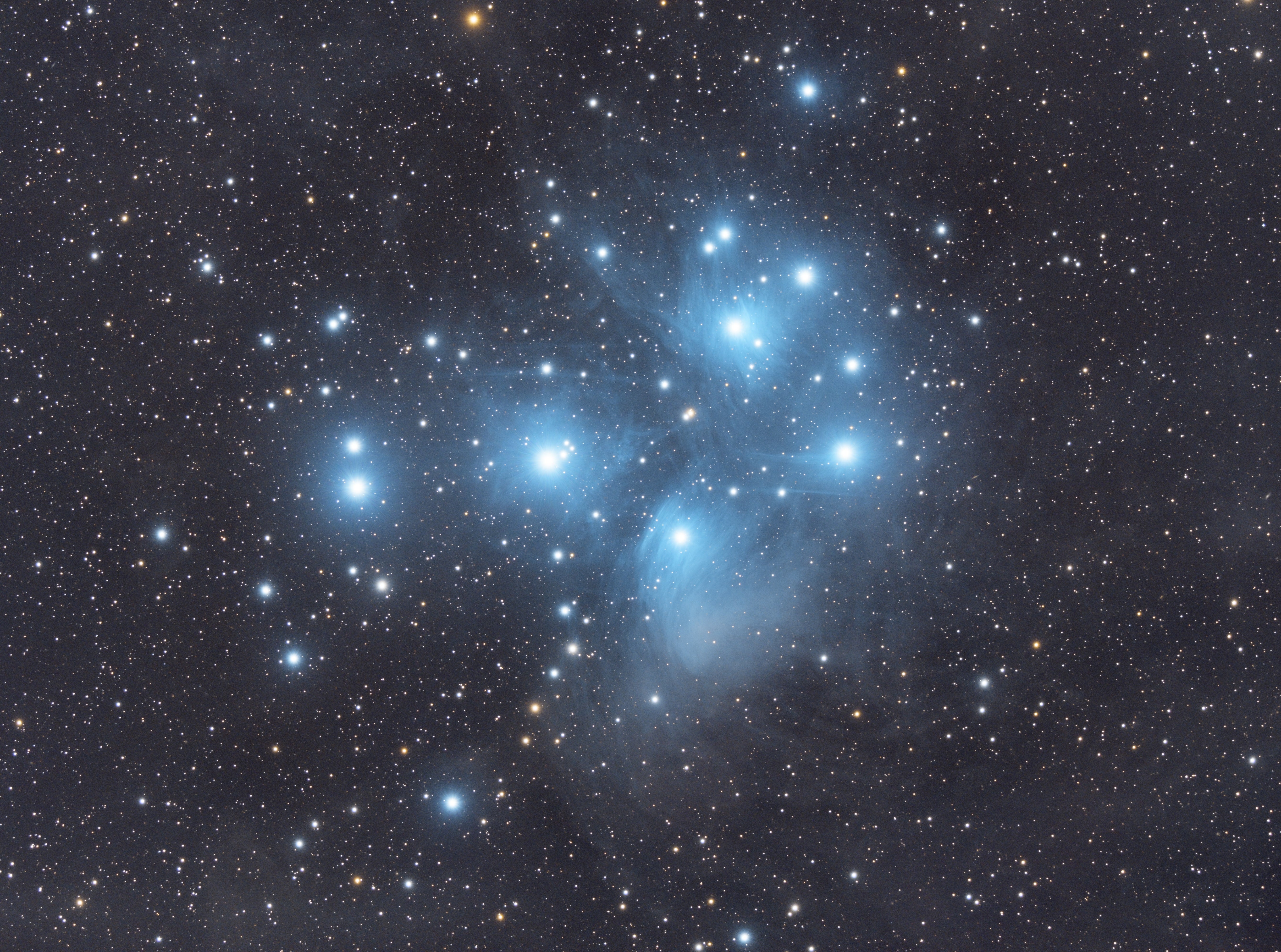
The Pleiades star cluster (M45) is one of the great gems of the winter sky. One of the closest open star clusters to us, it lies just 440 light-years away in Taurus. It is also an asterism: In a dark sky, the naked eye can distinguish seven bright stars in a distinctive dipper-shaped arrangement — hence the cluster’s ancient mythological name of the Seven Sisters. But the cluster’s fainter members extend much farther — in fact, the entire cluster occupies an area as wide as three Full Moons on the sky.
A large telescope in a dark sky — or deep-sky imaging — can reveal the cluster’s nebulosity, which is caused by light from the cluster’s young, hot blue stars reflecting off a passing molecular cloud. Unlike other nebulous clusters in the sky, the dust here is not associated with the cluster’s formation.
The Pleiades played a prominent role in the astronomy of cultures the world over. In ancient Greece, the rising of this cluster in the spring marked the beginning of the Mediterranean sailing season. They bestowed on this object the name Pleiades, likely from the word plein, meaning to sail.
The Pleiades continue to resonate today. Consider Japan, where the cluster’s Japanese name has been borrowed by not only a world-leading telescope but a car manufacturer who uses the asterism as its logo: Subaru.
Follow Astronomy magazine, the world’s best-selling astronomy magazine:
🌎 Website: https://astronomy.com
📖 Subscribe: http://subscribe.astronomy.com
📘 Facebook: https://www.facebook.com/AstronomyMagazine
📸 Instagram: https://instagram.com/astronomy.magazine
🐦 Twitter: https://twitter.com/AstronomyMag
Shop Celestron telescopes:
🔭 Website: https://celestron.com
Follow Dave Eicher:
📘 Facebook: https://www.facebook.com/davidjohneicher
📸 Instagram: https://instagram.com/eicher.david
🐦 Twitter: https://twitter.com/deicherstar









